Architecture, Indonesia
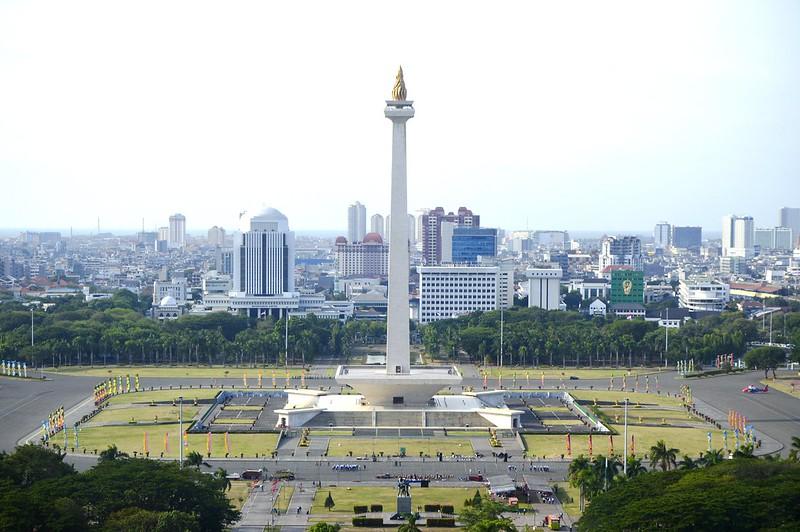
Removed from Unnamed collection
National Monument 
The main Sudirman-Thamrin avenues in Jakarta lead to the Merdeka Square, where in its center stands the National Monument (also known as Monas or Monumen Nasional) which houses the first red-and-white flag flown at the Proclamation of Independence on 17 August 1945. This flag has now become threadbare, and so nowadays on Independence Day ceremonies, the original flag is taken out but only to accompany the replica flag to be flown in front of the Merdeka Palace. The 137 meter tall National Monument is obelisk shaped, and is topped with a 14.5 meter bronze flame coated with 32 kilograms gold leaf.
Within the pedestal is a museum depicting in diorama Indonesia’s fight for Independence as well as the original text of the Proclamation of Independence. A lift takes visitors up to the look-out platform at the base of the flame for a grand view of Jakarta. Surrounding the Monument is now a park with a musical fountain, enjoyed by the Jakarta public on Sundays for sports and recreation. Deer roam among the shady trees in the park. https://www.indonesia.travel/au/en/destinations/java/dki-jakarta/national-monument
Map
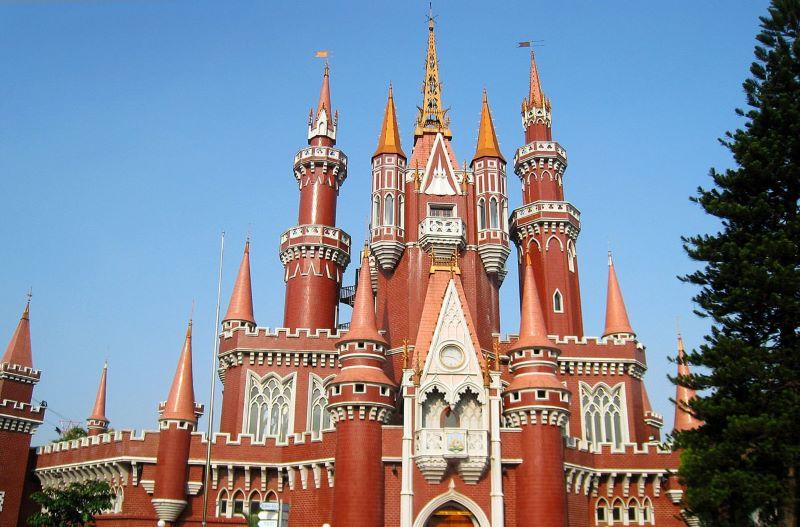
Removed from Unnamed collection
Taman Mini Indonesia Park 
Taman Mini Indonesia Park is a must-try for families visiting Jakarta or anyone looking to schedule one day in their city holiday plan to appreciate the rich arts and cultural diversity of the whole Indonesian islands. It’s one of the most unique amusement parks in the world and offers a great break away from the hectic metropolitan scenes.
The park boasts multiple pavilions, each representing the unique architectures, traditional costumes and performing arts of the different islands. From the arching roofs of traditional Sumatran houses, eloquent moves of Javanese and Kalimantan traditional dancers, to the ornate wood carvings and heritage textiles from the Nusa Tenggara Islands. http://www.indonesia-holidays.com/jakarta/attractions/taman-mini-indonesia-park.htm
Map
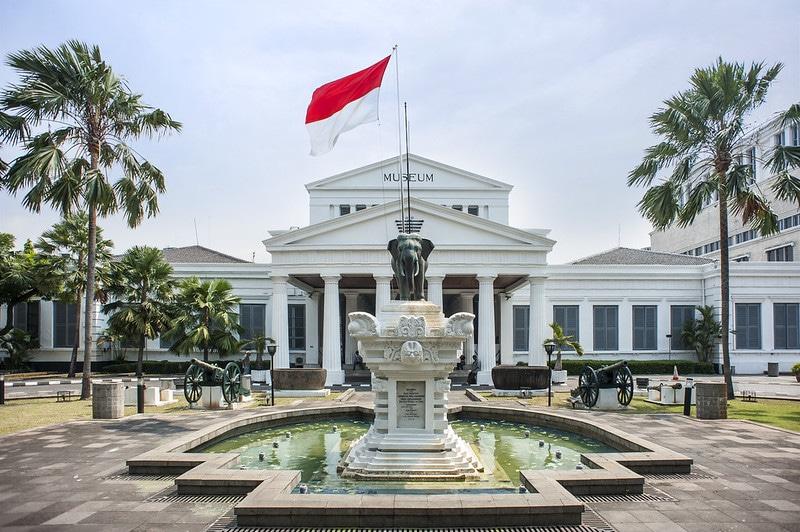
Removed from Unnamed collection
Jakarta National Museum 
Located on Medan Merdeka Barat, the National Museum is the pride of Jakarta, providing visitors an insight into Indonesia’s long history in cultural heritage from prehistoric days up to today. Having recently been expanded, the museum houses an impressive collection of no less than 109,342 objects covering Indonesia’s Prehistory, Archaeology, Ethnography, Numismatics-Heraldic, Geography and Historical Relics.
Here are statues and stone inscriptions discovered on sites throughout the archipelago starting from the first century AD, a complete collection of batik cloths and woven textiles produced through the years in the different islands. While on the top floor one finds displayed the collection of gold and silver ornaments and jewelry once owned by the rajahs and sultans of the archipelago. https://www.indonesia.travel/au/en/destinations/java/dki-jakarta/national-museum
Map
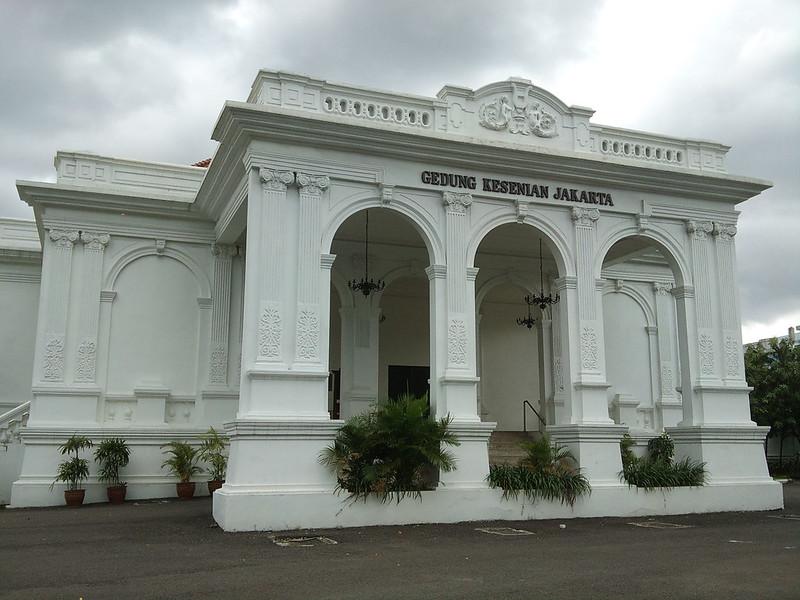
Removed from Unnamed collection
Jakarta Performing Art Theater 
Gedung Kesenian Jakarta is a heritage building from Dutch colonial days, where artists regularly perform traditional and modern drama, concerts, and musicals. Built in 1821 its construction is in neo-renaissance style and was called the Theater Schouwburg Weltevreden or the Pasar Baru Theater since it is located just across the popular Pasar Baru shopping center. http://jakarta-tourism.go.id/2015/content/jakarta-performing-art-theater
Map

Removed from Unnamed collection
Tanah Lot 
Tanah Lot is one of Bali’s directional temples, and is situated on a rock in the ocean, just offshore. From all the beautiful temples on Bali, Tanah Lot is quite special and for many one of the "must-things-to-do".
It is said that Pura Tanah Lot has been built on the recommendation of an important Hindu priest Danghyang Nirartha in the 16th century, who has shaped Bali's Hinduism and religious architecture for the centuries to come.
Tanah Lot is a very important site for pilgrimages and plays an important role in Balinese spiritualism and mythology. The rock that the temple sits on has been eroded by the ocean over the centuries, and is now undergoing a process of restoration. https://www.bali.com/temple_Tanah-Lot_Pura-Tanah-Lot_81.html
Map
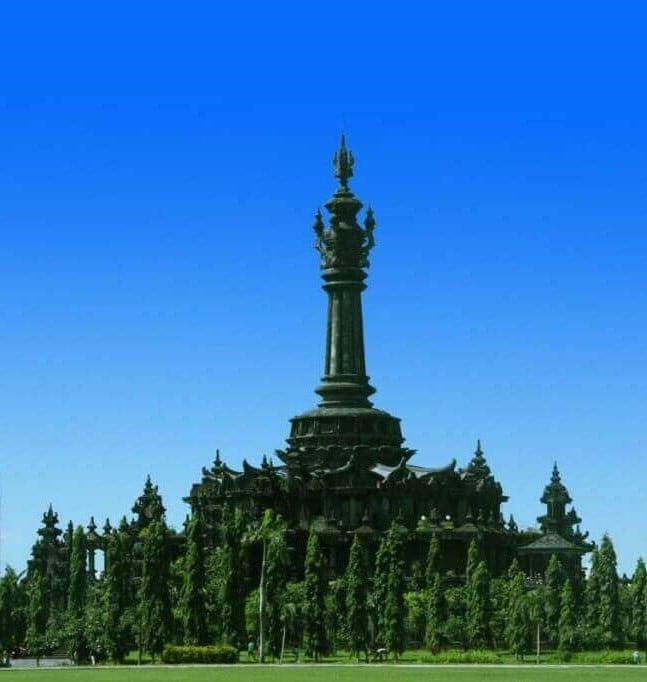
Removed from Unnamed collection
Bajra Sandhi Monument 
Set within a beautiful park in front of the Bali Governor Office in Renon, Denpasar, this massive cultural monument was built in order to mark the struggle of the Balinese people throughout history. The Bajra Sandhi Monument features a three-tiered black stone structure with a tall tower that’s surrounded by courtyards. There’s a spiral staircase that leads up to the top of the monument offering 360-degree views of Denpasar, including the surrounding government buildings and the towers of the Denpasar Cathedral. On the building’s second floor, a series of 33 dioramas trace Bali’s long and unique history: prehistoric times, the introduction of Hinduism, Dutch colonialism, and its independence. https://www.thebalibible.com/details/bajra-sandhi-monument-15058
Map

Removed from Unnamed collection
Borobudur Temple 
The Sailendra dynasty built this Largest Buddhist monument in the world between AD 780 and 840. It was built as a place for glorifying Buddha and a pilgrimage spot to guide mankind from worldly desires into enlightenment and wisdom according to Buddha. http://borobudurpark.com/en/temple/borobudur-2/
Map
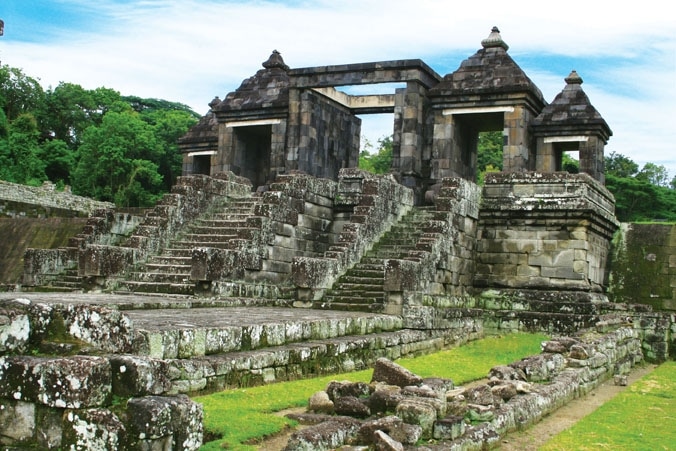
Removed from Unnamed collection
Ratu Boko Temple 
Settled on a hillside plateau, overlooking Prambanan temple complex and with a view to Mount Merapi behind Prambanan Temple complex, lie the remains of a once grand palace. The palace (kraton) is named Ratu Boko after a King Boko of local folklore, but the real owner of the palace is more likely to have been a king of a local dynasty. http://indonesia-tourism.com/blog/ratu-boko-temple-yogyakarta/
Map

Removed from Unnamed collection
The Palace - Keraton Yogyakarta 
The palace court with its grand and elegant Javanese architecture lies in the center of the city. Prince Mangkubumi founded the palace in 1755. http://www.indonesia-tourism.com/yogyakarta/keraton.html
Map
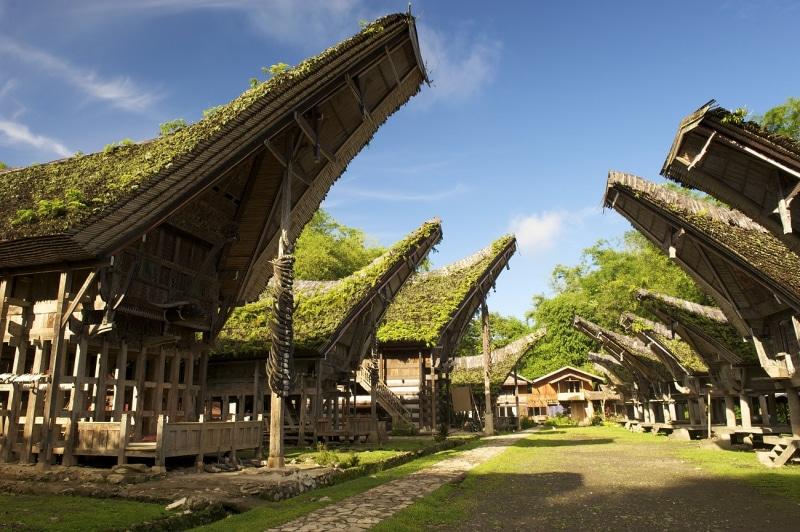
Removed from Unnamed collection
Tana Toraja 
Tana Toraja is safely protected beyond the lofty mountains and rugged granite cliffs of the central highlands of the island of Sulawesi and the home of the Toraja people. 'Discovered' and opened to the world from their long isolation only since the beginning of the last century, the Toraja today still adhere to their age-old beliefs, rituals and traditions. The nobility of Toraja are believed to be descendants of heavenly beings who came down by a heavenly stairway to live here on earth in this beautiful landscape. To keep up the energy of the land and its people, the Toraja people believe that these must be sustained through rituals that celebrate both life and death, which are attached to the agricultural seasons. Tourists to Toraja, therefore, are either attracted by its unique culture and rituals, most of which are mostly centered around graves and death ceremonies. While others prefer to avoid the morbid images and go trekking through the spectacular, almost untouched Toraja countryside visiting remote villages, or exhilarate in rafting the Sa'dan river rapids. https://www.indonesia.travel/au/en/destinations/sulawesi/tana-toraja
Map
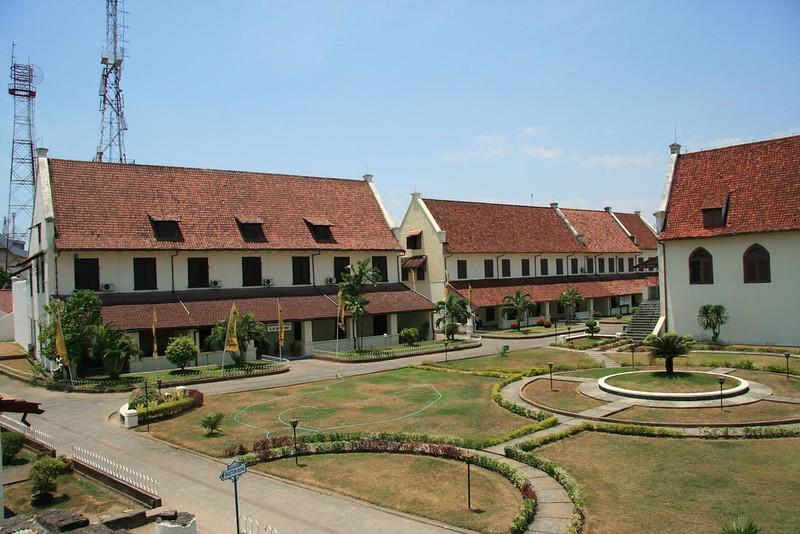
Removed from Unnamed collection
Fort Rotterdam 
Standing majestically at the western coast of Makassar, South Sulawesi. Fort Rotterdam is recognized as the city’s most iconic landmark. With historical traces dating back to the Kingdom of Gowa from the 16th century to colonization by the Dutch, this Fort has silently witnessed many episodes in Makassar’s history, playing a most essential role in its development.
Its magnificence and authenticity has always captivated those who set eyes on it. Originally called Benteng or Fort Jumpandang or Ujung Pandang, the huge complex was first built in 1545 in the era of Imanrigau Daeng Bonto Karaeng Lakiung or Karaeng Tunipalangga Ulaweng, the tenth King of Gowa. Initially, the fort was made from a mixture of Stone and burnt clay, and took the shape of a typical square Portuguese architectural style.
The fort was also expanded and took on a new shape resembling a sea turtle, thus the fort gained a new name, Benteng Pannyua (Penyu) or Fort Sea turtle. The shape is not only unique, but also contains deep meaning. For just as a sea turtle lives both on land and at sea, the glory of the Gowa Kingdom also stretched on land as well as over the seas. https://www.indonesia.travel/gb/en/destinations/sulawesi/makassar/fort-rotterdam
Map
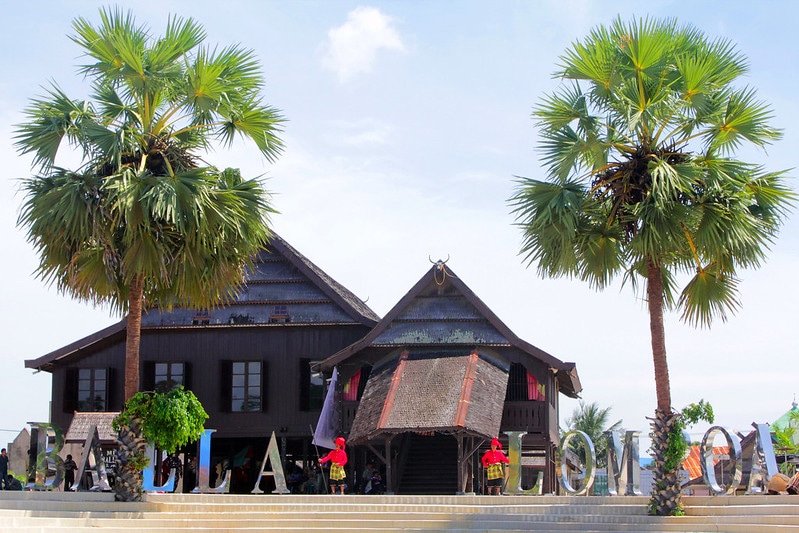
Removed from Unnamed collection
Balla Lompoa Museum 
An impressive “Changing of the Guard” ceremony takes place at the Ballalompoa Museum, the former Palace of the Sultan of Gowa. Wearing resplendent bright red costumes, “soldiers” involved in the “Changing of the Guard” at the former Gowa Palace will perform their drill for the public to watch every morning at 09.0 am, promised the Bupati (Regent) of the district of Gowa.
Built in 1936, the Palace of the Sultan of Gowa, formerly also known as the Sungguminasa Palace, is a large wooden structure built on stilts and has an imposing roofed staircase that leads to the reception room. It has five wooden panels in the gable of the roof, which denotes royalty and may be used only by the Sultan.
The Ballalompoa Museum today houses the resplendent treasure and regalia of the former Sultan of Gowa, among which the Gowa gold crown, bracelets with precious stones, royal swords, keris and gold jewellery.
Every year a special ceremony called “Acera Kalomponag” is held to cleanse and weigh the gold crown, which is believed to have been inherited from the first female ruler of Gowa, called I Tanisamanga. According to belief, the crown never weighs the same each year it is weighed. When its weight increases it is a good omen that all will be well in the region. https://www.indonesia.travel/gb/en/destinations/sulawesi/makassar/ballalompoa-museum
Map
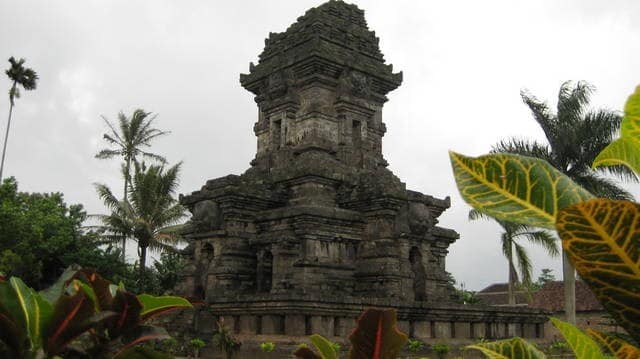
Removed from Unnamed collection
Singosari Temple 
Not much remains of the once powerful 13th century East Java kingdom of Singosari. An unfinished temple and two giant statues that once stood guard in front of the palace are the only traces left of this great kingdom. http://www.indonesia.travel/en/destination/point-of-interest/singosari-temple
Map

